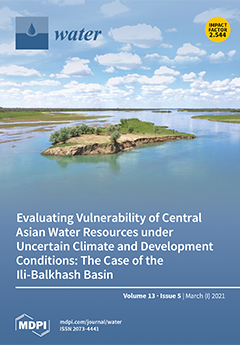In recent years, titanium dioxide (TiO
2) has increasingly been used as an inorganic ultraviolet (UV) filter for sun protection. However, nano-TiO
2 may also pose risks to the health of humans and the environment. Thus, to adequately assess its potential adverse
[...] Read more.
In recent years, titanium dioxide (TiO
2) has increasingly been used as an inorganic ultraviolet (UV) filter for sun protection. However, nano-TiO
2 may also pose risks to the health of humans and the environment. Thus, to adequately assess its potential adverse effects, a comprehensive understanding of the behaviour and fate of TiO
2 in different environments is crucial. Advances in analytical and modelling methods continue to improve researchers’ ability to quantify and determine the state of nano-TiO
2 in various environments. However, due to the complexity of environmental and nanoparticle factors and their interplay, this remains a challenging and poorly resolved feat. This paper aims to provide a focused summary of key particle and environmental characteristics that influence the behaviour and fate of sunscreen-derived TiO
2 in swimming pool water and natural aquatic environments and to review the current state-of-the-art of single particle inductively coupled plasma mass spectrometry (SP-ICP-MS) approaches to detect and characterise TiO
2 nanoparticles in aqueous media. Furthermore, it critically analyses the capability of existing fate and transport models to predict environmental TiO
2 levels. Four particle and environmental key factors that govern the fate and behaviour of TiO
2 in aqueous environments are identified. A comparison of SP-ICP-MS studies reveals that it remains challenging to detect and characterise engineered TiO
2 nanoparticles in various matrices and highlights the need for the development of new SP-ICP-MS pre-treatment and analysis approaches. This review shows that modelling studies are an essential addition to experimental studies, but they still lack in spatial and temporal resolution and mostly exclude surface transformation processes. Finally, this study identifies the use of Bayesian Network-based models as an underexplored but promising modelling tool to overcome data uncertainties and incorporates interconnected variables.
Full article





